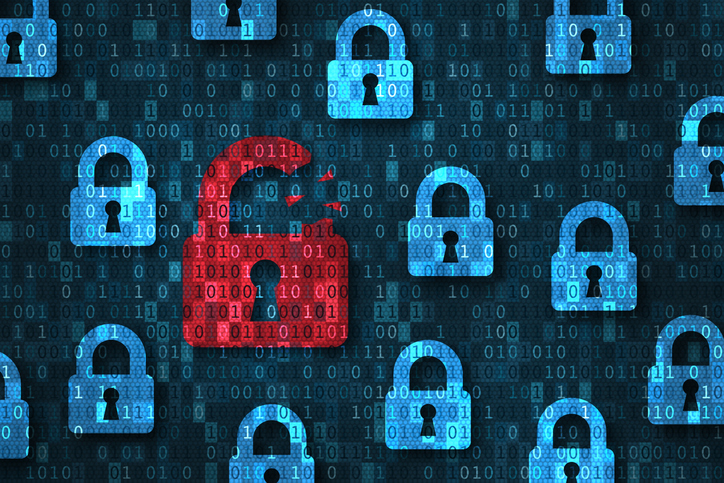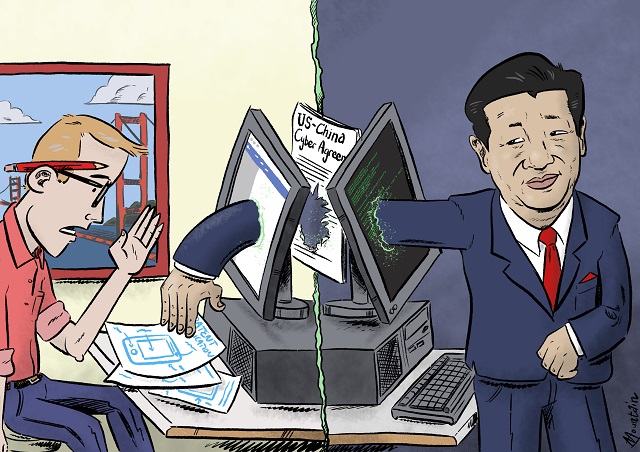An informed and independent voice: ASPI, 2001-2021
To mark its establishment in August 2001, the Australian Strategic Policy Institute has published an intellectual history of its work over two decades: An informed and independent voice: ASPI, 2001–2021.
ASPI’s mission is to ‘contribute an informed and independent voice to public discussion’. That was the vision embraced by the Australian Government in creating ‘an independent institute to study strategic policy’, designed to bring ‘contestability’ and ‘alternative sources of advice’ to ‘key strategic and defence policy issues’.
The story of how the institute did that job is told by ASPI’s journalist fellow, Graeme Dobell. He writes that ASPI has lived out what its name demands, to help deliver what Australia needs in imagining ends, shaping ways and selecting means.
An informed and independent voice covers the terrorism era and national security; the work of the Defence Department; Australia’s wars in Iraq and Afghanistan; the evolution of Australia’s strategy in the Indo-Pacific; relations with China and the US; cyber and tech; Japan, India and the Quad; Indonesia and Southeast Asia; Australia’s island arc—the the South Pacific and Timor-Leste; Northern Australia; Women, peace and security; Climate change; Antarctica; 1.5 track dialogues; the work of the digital magazine The Strategist; and ‘thinking the ASPI way’.
The submission to cabinet on ASPI’s founding said that the principles of contestability had ‘not yet been effectively implemented in relation to defence and strategic policy, despite the vital national interests and significant sums of money that are at stake’. That demand, at the heart of the institute’s creation, has been met and still drives its work.
Introduction: sometimes we will annoy you
A senior diplomat from one of Australia’s close ‘Old Commonwealth’ partners tells a story about hosting an Australian visit from his country’s defence minister, an aspiring political operator. The minister came to ASPI for a 90-minute roundtable with senior staff. Mark Thomson briefed on Defence’s budget woes—this was one of those years when financial squeezing was the order of the day, and a gap was quietly appearing between policy promises and funding reality.
Andrew Davies reported on the challenges of delivering the Joint Strike Fighter, the contentious arrival of the ‘stop-gap’ Super Hornet and the awkward non-arrival of the future submarine. Rod Lyon spoke about the insurmountable problems of Iraq and Afghanistan, the rise of the People’s Republic of China (PRC) and our own government’s foreign policy foibles. It was, like many ASPI meetings, a lively and sustained critique of policy settings. Driving back to the High Commission, a somewhat startled minister muttered to his diplomatic escort: ‘Thank God we don’t have a think tank like that back home!’
The genius of ASPI is that it’s designed to be a charming disrupter. Sufficiently inside the policy tent to understand the gritty guts of policy problems, but with a remit to be the challenger of orthodoxies, the provider of different policy dreams (as long as they’re costed and deliverable), the plain-speaking explainer of complexity, and a teller of truth to power. Well, that’s perhaps a little too grand. ASPI aims to be a helpful partner to the national security community, not a hectoring lecturer. But the institute ceases to have any value if it just endorses current policy settings: the aim is to provide ‘contestability of policy advice’. Not always easy in a town where climbing the policy ladder is the only game.
The story of ASPI’s creation has been told by several present at the creation1 and, very enjoyably, by Graeme Dobell in the second chapter in this volume. With the release of the Howard government cabinet records for the year 2000, we now get to see that the National Security Committee of cabinet deliberated carefully over ASPI’s composition, charter, organisational location, geographical location and underlying purpose. The annual expenditure proposed ($2.1 million) was, by Defence’s standards, trivial even in 2000. What the government was chewing over was the sense or otherwise of injecting a new institution into the Canberra policymaking environment.
The case for a strategic policy institute was set out in a cabinet submission considered on 18 April 2000:
There are two key reasons to establish an independent institute to study strategic policy.
The first is to encourage development of alternative sources of advice to Government on key strategic and defence policy issues. The principles of contestability have been central to our Government’s philosophy and practice of public administration, but 2 An informed and independent voice: ASPI, 2001–2021 these principles have not been effectively implemented in relation to defence and strategic policy, despite the vital national interests and significant sums of money that are at stake. The Government has found in relation to the COLLINS Class Submarines project for instance, and more recently in relation to White Paper process, that there are almost no sources of alternative information or analysis on key issues in defence policy, including the critical questions of our capability needs and how they can best be satisfied. The ASPI will be charged with providing an alternative source of expertise on such issues.
Second, public debate of defence policy is inhibited by a poor understanding of the choices and issues involved. The ASPI will be tasked to contribute an informed and independent voice to public discussion on these issues.2
‘An informed and independent voice’. There couldn’t be a better description of what the institute has sought to bring to the public debate; nor could there be a more fitting title for this study of ASPI’s first 20 years by Graeme Dobell, ably assisted by the voices and insights of many ASPI colleagues.
The April cabinet meeting agreed that ASPI should be established, but the government went back to Defence a second time to test thinking about the institute’s organisational structure.
In July, the department proposed several options, including that ASPI could be added as an ‘internal Defence Strategic Policy Cell’, or operate as an independent advisory board to the Minister for Defence, or be based at a university, or be a statutory authority, executive agency or incorporated company. Having considered other possibilities, the government accepted Defence’s recommendation (endorsed by other departments) that ASPI be established as a government-owned incorporated company managed by a board ‘to enhance the institute’s independence within a robust and easy to administer corporate structure’.3
The most striking aspect of this decision is that the government opted for the model that gave ASPI the greatest level of independence. There were options that would have limited the proposed new entity, for example, by making it internal to Defence or adding more complex governance mechanisms that might have threatened the perception of independence. Those options were rejected. A decision to invite a potential critic to the table is the decision of a mature and confident government. It’s perhaps not surprising that there aren’t many ASPI-like entities. Prime Minister Howard was also keen to see that the institute would last beyond a change of government. ASPI was directed to be ‘non-partisan’, above daily politics. The leader of the opposition would be able to nominate a representative to the ASPI Council. ASPI would also be given a remit to ‘pursue alternate sources of funding and growth’, giving the institute the chance to outgrow its Defence crib.
Interestingly, the August 2000 cabinet decision to establish ASPI as a stand-alone centre structured as an incorporated company and managed by a board of directors also stated that: ‘The Cabinet expressed a disposition to establish the centre outside of the Australian Capital Territory.’4 By the time ASPI was registered in August 2001 as an Australian public company limited by guarantee, the institute’s offices were located in Barton in the ACT, where they remain to this day.
The government appointed Robert O’Neill AO as the chair of the ASPI Council, and the inaugural membership of the council was appointed in July 2001, meeting for the first time on 29 August 2001. That month, the council appointed Hugh White AO as the institute’s executive director and Hugh set about building the initial ASPI team. A fortnight later, the world fundamentally changed. Terrorist attacks on New York’s World Trade Center and the Pentagon and one unsuccessfully aimed at the White House jolted the strategic fabric of the Middle East and the world’s democracies. ASPI couldn’t have started at a more challenging time for strategic analysis.
Writing in ASPI’s first annual report, Hugh White reported that the institute in 2001–02 ‘did a small amount of work directly for government, including a substantial assessment for the Minister for Defence, Senator Hill, of the implications of September 11 for Australia’s defence’.5
ASPI’s first public report was a study by Elsina Wainwright, New neighbour, new challenge: Australia and the security of East Timor. This was followed by the first of Mark Thomson’s 16 editions of The cost of Defence: the ASPI defence budget brief 2002–03. This included a rundown of the top 20 defence capability acquisition projects. The slightly cheeky cartoon covers—state and territory seagulls pinching Defence spending chips is my favourite—didn’t start until 2003–04, but the first Cost of Defence began the trend to report Defence’s daily budget spend: $39,991,898.63. (The 2021–22 Cost of Defence records the daily spend at $122,242,739.73.)
Hugh White closed off his 2001–02 Director’s report with ‘Clearly the task of defining our role in the policy debate will take some time to complete, but we believe we have made a good start.’ It was quite a foundation year: tectonic global security shifts, challenging regional deployments, defence budget and capability analysis. ASPI’s course was set, and the rest, as they say, makes up the history that Graeme Dobell and ASPI colleagues cover in this book. Graeme’s analysis makes sense of what, to the participants, might have felt from time to time like one damned thing after another. But patterns do emerge, and they coalesce into the realisation that ASPI’s first 20 years have marked some of the most turbulent shifts in Australia’s security outlook. All of which puts, or should put, a tremendous premium on the value of strategic policy, contestable policy advice, an informed and engaged audience and a new generation of well-trained policy professionals.
ASPI today is a larger organisation working across a wider area of strategy and policy issues.
The annual report for 2019–20 lists 64 non-ongoing (that is, contracted) staff, of whom 45 were full time (22 female and 23 male) and 15 were part time (11 female and four male). The overall ASPI budget was $11,412,096.71, of which $4 million (35%) was from Defence, managed by a long-term funding agreement. A further $3.6 million (32%) came from federal government agencies; $0.122 million (1%) from state and territory government agencies; $1.89 million (17%) from overseas government agencies, most prominently from the US State Department and Pentagon and the UK Foreign and Commonwealth Office. Defence industry provided $0.370 million (3%); private-sector sponsorship was $1.241 million (11%) and finally, funding from civil society and universities was $0.151 million (1%).6
Behind those numbers is a mountain of effort to grow the institute and sustain it financially.
Think tanks need high-performing staff, and high-performing staff need salaries that will keep them at the think tank. The nexus between money and viability is absolute. Around the world, there are many think tanks that don’t amount to much more than a letterhead and an individual’s dedicated effort in a spare room at home. The reality is that building scale, research depth, a culture of pushing the policy boundaries and a back-catalogue of high-quality events and publications takes money. In the early stages of ASPI’s life, I recall the view expressed that the institute couldn’t possibly be regarded as independent if the overwhelming balance of its resources came from the Department of Defence. More recently, the charge is that the ‘military industrial complex’ or foreign governments must be the tail that wags the dog. The Canberra embassy of a large and assertive Leninist authoritarian regime can’t conceive that ASPI could possibly be independent in its judgements because, well, no such intellectual independence survives back home. ASPI must therefore be the catspaw of Australian Government policy thinking.
None of those contentions are borne out by looking at the content of ASPI products over the past two decades. There are plenty of examples (from critiques of the Port of Darwin’s lease to a PRC company; analysis of key equipment projects such as submarines and combat aircraft; assessments of the Bush, Obama, Trump and now the Biden presidencies; assessments of the Defence budget; differences on cyber policy) in which the institute’s capacity for feisty contrarianism has been on full display. In my time at ASPI, I haven’t once been asked by a politician, public servant, diplomat or industry representative to bend a judgement to their preferences. It follows that, for good or ill, the judgements made by ASPI staff, and our contributors, are their views, and their views alone. ASPI is independent because it was designed to operate that way. Its output demonstrates that reality every day.
And as you will see in these pages, ASPI has views aplenty. It became clear several years ago that the institute needed to broaden its focus away from defence policy and international security more narrowly conceived to address a wider canvas of security issues. That’s because the wider canvas presents some of the most interesting and challenging dilemmas for Australia’s national security. We sought to bring a new policy focus to cyber issues by creating the ASPI International Cyber Policy Centre. This was followed by streams of work addressing risk and resilience; counterterrorism; policing and international law enforcement; countering disinformation; understanding the behaviour of the PRC in all its dimensions; and, most recently, climate and security.
Does ASPI’s work have real policy effect? One of the curiosities of the Canberra environment is that officials will often go to quite some length to deny that a think tank could possibly shift the policy dial. To do so might be to acknowledge an implicit criticism that a department or agency hasn’t been on its game. Changing policy is often more like a process of erosion than a sudden jolting earthquake. It can take time to mount and sustain a critique about policy settings before the need for change is finally acknowledged. And it has to be said that the standard disposition of Canberra policymakers is to defend current policy settings. That shouldn’t be too surprising: current policy settings in many cases will be the result of government decisions, and, at times, the role of the public service is to raise the drawbridge and defend the battlements. So, it’s often the case that a department’s response to the arrival of an ASPI report isn’t a yelp of joy so much as the cranking up of a talking points brief for the minister that explains why current policy settings are correct, can’t be improved upon and quite likely are the best of all possible worlds.
ASPI’s influence is therefore more indirect than that of the Australian Public Service (APS), but, as Sun Tzu reminds us, ‘indirect methods will be needed in order to secure victory.’7 The institute has some natural strengths in this approach. ASPI has the advantage of being small and flexible; it has a charter to look beyond current policy settings; it can talk to a wide range of people in and out of government to seed ideas; it can engage with the media; it allows expertise to develop because more than a few ASPI staff have stayed in jobs for years and built a depth of knowledge not necessarily found in generalist public servants who frequently change roles.
Taking a longer view, I would suggest that ASPI has indeed managed to influence the shape of policy in a number of areas. The institute has helped to create a more informed base of opinion on key defence budget and capability issues. This has helped to strengthen parliamentary and external scrutiny of the Defence Department and the ADF. ASPI is really the only source providing detailed analysis of defence spending and has helped to lift public understanding about critical military capability issues, such as the future submarine project, the future of the surface fleet, air combat capabilities, the land forces, space, and joint and enabling capabilities.
ASPI has had substantial impact on national thinking about dealing with the PRC, and that has helped at least set the context for government decision-making on issues such as the rollout of the 5G network, countering foreign interference, strengthening security consideration of foreign direct investment and informing national approaches to fuel and supply-chain security.
ASPI has sought to make policy discussions about cyber, critical and emerging technologies more informed and more accessible. The institute has offered many active, informed and engaged voices on critical international issues of importance to Australia, from the Antarctic to the countries and dynamics of the Indo-Pacific, the alliance with the US, the machinery of Defence and national security decision-making, the security of northern Australia and even re-engaging with Europe.
It’s best left to others to judge the success or otherwise of the institute. Both from the approval, and sometimes disapproval, that ASPI garners, we can see that people pay attention to the institute’s work. That’s gratifying and motivates the team to keep doing more.
Coincidentally to ASPI’s 20th anniversary, the Australian Parliament’s Senate Foreign Affairs, Defence and Trade References Committee has been conducting an inquiry into funding for public research into foreign policy issues. In making a submission to that inquiry, I offered what I hoped was useful advice about the contours of what a notional ‘foreign policy institute’ should look like if the government wanted to promote in the field of foreign policy what ASPI seeks to do for defence and strategic policy. That led me to suggest the following seven approaches, presented here with minor edits:
- A foreign policy institute must be genuinely independent, with a charter that makes its core functions clear and a governance framework that supports its independence. If the Department of Foreign Affairs and Trade (DFAT) were to be the prime source of funding, it should be made clear that DFAT should not influence the policy recommendations of the institute’s work. A government-appointed council, including a representative of the leader of the opposition, should provide overall strategic direction for the institute. Any entity that is part of a larger government department will inevitably come to reflect the parent. A clear separation between the parent department and the institute is essential.
- The institute should not be part of a university, because university priorities would weaken the institute’s capacity to retain a sharp focus on public policy. The committee might like to test this proposition by seeing whether it can identify any contemporary foreign policy research outfit that is part of a university which has substantially shaped Australian foreign policy. My view is that you will search in vain. This is true in the main because universities have priorities other than shaping public policy outcomes. How universities recruit, reward and promote, what they teach and the outcomes they regard as constituting excellence are shaped towards other ends than providing contestable and implementable foreign policy.
- The institute needs scale to develop excellence. Successful think tanks—such as those at the top end of the University of Pennsylvania’s ‘Go To’ index—attract people interested in policy ideas and with lateral thinking skills and with some entrepreneurial flair. The quality of their thinking is strengthened by being able to test their ideas with colleagues and collaborate on interesting policy work. Some scale is needed to bring a group of people like that together, offering terms and conditions that allow people to develop skills over a few years. This approach stands in contrast to the instinct of some departments to offer one-off, short-term, small funding grants. In my experience, multiple ‘penny-packet’ grants become difficult for departments to administer, produce reports that lack an understanding of how public policy is really done and do not develop skills.
- The institute will need some time to establish itself. ASPI is 20, and every day is a story of how we manage the tasks of offering policy contestability, engaging with our stakeholders and sustaining ourselves financially. It took probably 15 years for an acceptance to be built in the rather tightknit defence and security community that ASPI was not simply to be tolerated but could add value and even be constructively brought into policy discussions. A foreign policy institute will take a similar amount of time to build an accepted place for itself. Hopefully, an institute would start producing good material on day one, but it will take years for such a group to be seen as a natural (indeed, essential) interlocutor in critical foreign policy discussions.
- The institute must be non-partisan, reaching out to all parts of parliament. Because foreign policy is a public policy good, it is appropriate and likely that the bulk of funding for a foreign policy institute will come from the public sector. If it is successful, the institute will survive through changes of governments, ministers and senior officials. As such, it can’t afford to be partisan in the way that many private think tanks are. That will still leave scope for engaged debate on policy options, which leads to approach number 6.
- Accept that the institute will, from time to time, annoy you. This is the price of contestability of policy advice. There is no question that ASPI has annoyed governments, oppositions and officials over the years on all manner of issues, from key bilateral relationships to defence equipment acquisitions, military operations, budgets and the rest. To advance policy thinking, it’s necessary from time to time to question existing policy orthodoxies. The test for the institute’s stakeholders is whether the value of contestable policy advice is worth the occasional annoyance. The test for the foreign policy institute will be whether the issue in question has been appropriately researched and thought through.
- A professional outfit needs appropriate funding. To succeed, a foreign policy institute needs to be able to attract a mix of staff who can be remunerated in line with their skills. As in all walks of life, one gets what one pays for. Funding of between $2 million and $3 million would set up an institute able to build some critical mass, working out of offices fitted out to an appropriately modest APS standard. The institute should have a remit to grow its funding base through its own efforts. This would be sufficient to enable a promising start to a potentially nationally important organisation.
ASPI was designed to place the executive director position at (approximately) the level of the APS Senior Executive Service Band 3 (deputy secretary) level. Salary and conditions are determined by the Remuneration Tribunal. The executive director, on direction from the ASPI Council, determines salary levels for ASPI’s staff, who are recruited on contracts. The intent is to recruit people with the mix of policy skills and hands-on public policy experience who can realistically shape policy thinking. Government departments and agencies are, in general, willing to support staff taking positions at ASPI, using options for leave without pay from the APS. For more senior staff, the hope is that some time spent at ASPI will enhance their careers, perhaps enabling them to return to the APS with new skills and capacities. For more junior staff, the aim is to equip them with skills that will make them attractive new hires for departments and agencies.8
Of course, I was doing little more than describing the ASPI business model developed more than 20 years ago and validated through two decades of enthusiastic policy research and advocacy by many dozens of ASPI staff.
Speaking personally, it has been the privilege of my professional life to spend almost a decade as the executive director of the institute since April 2012, and a few more years before that as ASPI’s director of programs between 2003 and 2006. My commitment to the organisation comes about because of the value I believe it adds to Australia’s defence and strategic policy framework. These policy settings matter. They’re the foundation of the security of the country, the security of our people and the very type of country that Australia aspires to be. Australia would be better defended if we had more lively debates about the best ways to promote our strategic interests. ASPI has truly been a national gem in sustaining those debates.
At the core of this book is Graeme Dobell’s sharp take on the intellectual content of hundreds of ASPI research publications, thousands of Strategist posts and many, many conferences, seminars, roundtables and the like. Graeme has done a wonderful job of breathing life into this body of work, reflecting some of the heat and energy that came from ASPI staff and ASPI contributors investing their brain power into Australia’s policy interests. In these pages, you read the story of Australia’s own difficult navigation through the choppy strategic seas of the past 20 years. It’s a thrilling ride and a testament to the many wonderful people who have worked at or supported the institute.
We should all hope that ASPI reaches its 40-year and even 50-year anniversaries, because there’s no doubt in my mind that Australia will continue to need access to contestable policy advice in defence and strategic policy. The coming years will be no less difficult and demanding than the years recounted here. In fact, Australia’s future is likely to face even greater challenges.
Never forget that strategy and policy matter. Profoundly so. That’s why ASPI matters.
Peter Jennings
Download
Readers are encouraged to download the full publication in PDF format here.
About ASPI
The Australian Strategic Policy Institute was formed in 2001 as an independent, non‑partisan think tank. Its core aim is to provide the Australian Government with fresh ideas on Australia’s defence, security and strategic policy choices.
ASPI is responsible for informing the public on a range of strategic issues, generating new thinking for government and harnessing strategic thinking internationally. ASPI’s sources of funding are identified in our annual report, online at www.aspi.org.au and in the acknowledgements section of individual publications. ASPI remains independent in the content of the research and in all editorial judgements. It is incorporated as a company, and is governed by a Council with broad membership. ASPI’s core values are collegiality, originality & innovation, quality & excellence and independence.
ASPI’s publications—including this report—are not intended in any way to express or reflect the views of the Australian Government. The opinions and recommendations in this report are published by ASPI to promote public debate and understanding of strategic and defence issues. They reflect the personal views of the author(s) and should not be seen as representing the formal position of ASPI on any particular issue.
Important disclaimer
This publication is designed to provide accurate and authoritative information in relation to the subject matter covered. It is provided with the understanding that the publisher is not engaged in rendering any form of professional or other advice or services. No person should rely on the contents of this publication without first obtaining advice from a qualified professional.
© The Australian Strategic Policy Institute Limited 2021
This publication is subject to copyright. Except as permitted under the Copyright Act 1968, no part of it may in any form or by any means (electronic, mechanical, microcopying, photocopying, recording or otherwise) be reproduced, stored in a retrieval system or transmitted without prior written permission. Enquiries should be addressed to the publishers. Notwithstanding the above, educational institutions (including schools, independent colleges, universities and TAFEs) are granted permission to make copies of copyrighted works strictly for educational purposes without explicit permission from ASPI and free of charge.
ISBN 978-1-925229-67-7 (print)
ISBN 978-1-925229-68-4 (online pdf)
Funding statement: No specific sponsorship was received to fund production of this report
- See, for example, Kim Beazley, John Howard et al., ASPI at 15, ASPI, Canberra, October 2016, online. ↩︎
- Cabinet memorandum JH00/0131—Establishment of the Australian Strategic Policy Institute—Decision, 18 April 2000, online. ↩︎
- Cabinet decision JH00/0216/CAB—Australian Strategic Policy Institute—alternate models to establish a strategic policy research centre—Decision, online. ↩︎
- Cabinet decision JH00/0216/CAB. ↩︎
- Australian Strategic Policy Institute, Annual report 2001–2002, ASPI, Canberra, October 2002, 10, online. ↩︎
- Australian Strategic Policy Institute, Annual report 2019–2020, ASPI, Canberra, October 2020, online; staff numbers are on page 10; funding data is on page 154. ↩︎
- Sun Tzu, The art of war, translated by Lionel Giles, Chapter V, 5, online. ↩︎
- My submission to the inquiry is available via the internet home page of the Senate Foreign Affairs, Defence and Trade References Committee, Inquiry into funding for public research into foreign policy issues, online. ↩︎

















































